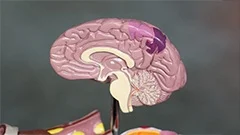Introduction
Cell polarity, a fundamental aspect of cell biology, refers to the asymmetric distribution of proteins, organelles, and signaling molecules within cells. This phenomenon is crucial in various cellular processes such as migration, division, differentiation, and apoptosis. Understanding cell polarity provides insight into the mechanisms that govern tissue organization and development, as well as disease pathogenesis.
Definition of Cell Polarity
Cell polarity describes the establishment and maintenance of distinct regional differences along a given axis within a cell or between cells. It results from the differential localization of specific proteins, organelles, or signaling molecules that create asymmetry within the cell or between adjacent cells.
Importance of Cell Polarity
Cell polarity is essential for several critical processes:
Cell Division
During mitosis, a cell must ensure proper separation of its chromosomes and cytoplasmic components to form two daughter cells. Polarized proteins help establish the plane of cleavage, ensuring equal division of genetic material and cellular contents between daughter cells.
Cell Migration
Cell migration is an essential process in development, wound healing, and immune responses. Polarity is crucial for directed movement of cells, as it determines the leading edge and the trailing edge of migrating cells.
Tissue Organization
In multicellular organisms, cell polarity plays a key role in tissue organization. It allows cells to interact with their neighbors and establish appropriate connections, ultimately contributing to the formation of tissues and organs.
Cell Differentiation
During development, cells differentiate into specialized cell types based on their position and environment. Polarized signaling pathways help regulate this process, ensuring that each cell acquires the correct identity and function.
Molecular Mechanisms of Cell Polarity
The establishment and maintenance of cell polarity rely on various molecular mechanisms, including cytoskeletal organization, protein localization, and intracellular signaling pathways.
Cytoskeleton and Cortical Actin
The cytoskeleton is a dynamic network of filaments that provides structural support to the cell. One important component of the cytoskeleton in establishing cell polarity is actin filaments, which form a cortex just beneath the plasma membrane. The organization and dynamics of cortical actin are regulated by various proteins, such as formins, Arp2/3 complex, and septins.
Protein Localization
Polarized proteins are often localized to specific regions within cells using targeting signals and intracellular transport mechanisms. For example, the Par (Partition) protein complex plays a crucial role in cell polarity by localizing to the posterior region of Drosophila melanogaster embryos.
Signaling Pathways
Several signaling pathways regulate cell polarity, including the Wnt/β-catenin, Hippo, and Notch pathways. These pathways control the expression and localization of proteins involved in cell polarization, thus influencing various cellular processes.
Cell Polarity in Different Contexts
Cell polarity is essential for proper functioning of cells across different contexts, including single cells, epithelial tissues, and neurons.
Single Cells
In unicellular organisms, cell polarity is critical for motility, chemotaxis, and nutrient uptake. For example, in Escherichia coli, a polarized cytoskeleton helps the bacteria swim towards favorable environments.
Epithelial Tissues
In multicellular organisms, epithelial tissues line organs such as the skin, gut, and lungs. Cell polarity is crucial for the formation of tight junctions between adjacent cells, which help maintain tissue integrity and selectively control the movement of molecules across the tissue.
Neurons
Neurons are highly polarized cells that have a distinct axon and dendrites. Polarity is essential for neuronal function, as it enables accurate transmission of electrical signals along the axon to synaptic connections on dendrites.
Dysregulation of Cell Polarity in Disease
Dysregulation of cell polarity has been implicated in various diseases, including cancer, neurodegenerative disorders, and developmental defects.
Cancer
In cancer cells, loss of cell polarity contributes to tumor progression by promoting uncontrolled growth, invasion, and metastasis. For example, mutations in the Par complex have been associated with colorectal cancer.
Neurodegenerative Disorders
In neurodegenerative disorders such as Alzheimer's disease and Parkinson's disease, dysregulation of cell polarity plays a role in neuronal degeneration. For instance, mutations in the presenilin proteins, which are involved in cell polarization, have been linked to familial Alzheimer's disease.
Developmental Defects
Defects in cell polarity can lead to developmental disorders such as polycystic kidney disease and holoprosencephaly. These disorders result from improper tissue organization due to malfunctioning polarization mechanisms during embryonic development.
Conclusion
Cell polarity is a fundamental aspect of cell biology that plays critical roles in various processes, including cell division, migration, differentiation, and tissue organization. Understanding the molecular mechanisms underlying cell polarity provides valuable insights into development, disease pathogenesis, and potential therapeutic targets for various disorders. Future research in this area will undoubtedly continue to unveil new aspects of cell polarity and its importance in maintaining cellular homeostasis.
MCQ: Test your knowledge!
Do you think you know everything about this course? Don't fall into the traps, train with MCQs! eBiologie has hundreds of questions to help you master this subject.
These courses might interest you
Create a free account to receive courses, MCQs, and advice to succeed in your studies!
eBiologie offers several eBooks containing MCQ series (5 booklets available free for each subscriber).



